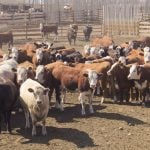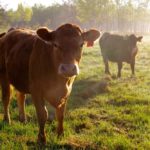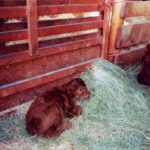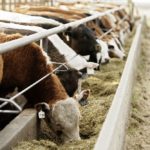A week of events during Canadian Western Agribition wrapped up the Canadian Simmental Association’s (CSA) milestone year of activities in co-operation with provincial Simmental associations to mark 50 years since the first Simmental set foot on Canadian soil. Parisien, a 1966 red-and-white spotted Simmental bull calf bred and born in France, was the lone Simmental […] Read more



 Livestock
Livestock










